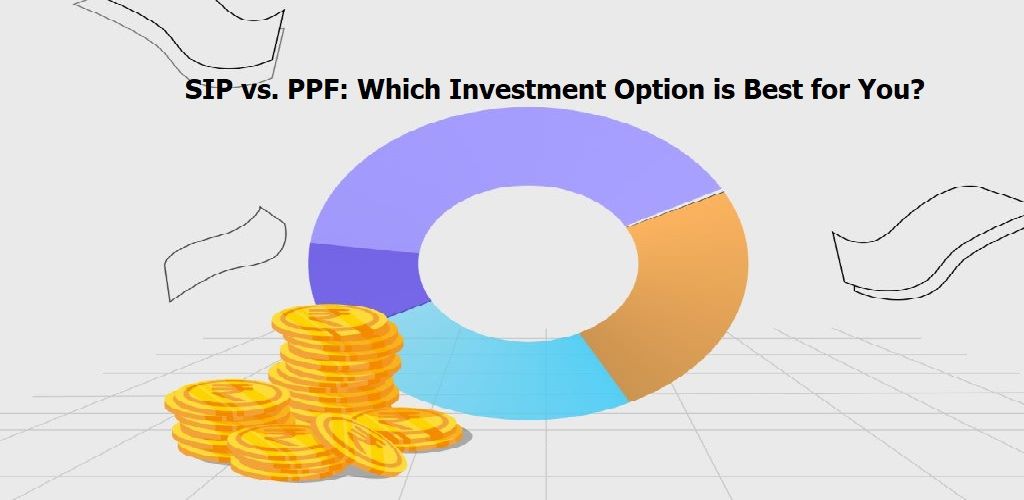Holding cash and using bank savings accounts are deemed to be fundamental and safe approaches to any financial plan. However, it does not capitalize on the potential for earning higher returns over time that may be associated with more speculative and riskier investments. Therefore, it is imperative to complement your ‘savings’ with other ‘investment’ avenues to ensure a balanced approach to financial planning.
In the dynamic world of finance, ‘mutual funds’ stand out as a popular and accessible investment vehicle, offering compounding benefits and fostering long-term growth. A mutual fund is a managed investment pool that combines funds from multiple investors to create a diversified portfolio of stocks, bonds, or other securities. This collective approach enables individuals to engage in financial markets without requiring in-depth knowledge.
Whether you are a seasoned investor or someone taking their first steps into the world of finance, understanding the fundamentals of mutual funds is crucial for building an excellent investment portfolio. Thus, this post will explore mutual funds deeply, covering their types, benefits, and risks to highlight their significant role in democratizing access to financial markets.
Types Of Mutual Funds
There are various types of mutual funds, each designed to cater to different investment objectives, risk tolerances, and preferences. Here are some common types of mutual funds:
Bond Funds:
Bond funds are investment vehicles that pool money from multiple investors to invest in a diversified portfolio of bonds. Bonds are fixed-income securities issued by governments, municipalities, corporations, and other entities to raise capital.
When individuals invest in a bond fund, they are essentially lending money to the issuer in exchange for periodic interest payments and the return of the principal amount at maturity. Bond funds also carry varying degrees of risk depending on the bonds they hold. Government bonds are generally considered less risky than corporate bonds or high-yield bonds. Lower-risk bonds offer lower yields, while higher-risk bonds offer potentially higher yields but with increased risk of default.
Equity Funds:
Equity funds, also known as stock funds, are investment funds that primarily invest in a diversified portfolio of stocks or equities. These funds pool money from multiple investors to provide them exposure to a broad range of stocks, allowing for potential capital appreciation and dividend income.
Equity mutual funds come in various types, including large-cap funds, mid-cap funds, and small-cap funds, to name a few. Since equity funds invest in stocks, they are subject to market fluctuations and volatility. The value of the fund can go up or down based on the performance of the underlying stocks.
Index Funds:
Index funds are a type of mutual fund that seeks to replicate the performance of a specific market index, such as the S&P 500 or other benchmark indices. Some of the popular examples of index funds in India are the S&P BSE (Bombay Stock Exchange) 500, Motilal Oswal S&P 500 Index Fund, and Nippon India Nifty SmallCap 250 Index Fund Direct-Growth, to name a few. These funds are passively managed, aiming to mirror the composition and returns of the chosen index rather than actively selecting individual securities.
Each index mutual fund is associated with a specific benchmark index, and its goal is to closely track the returns of that index. The choice of the index determines the focus, such as large-cap, mid-cap, small-cap, or sector-specific exposure. These types of funds are also known for their low expense ratios. Since they don’t involve the same level of research and decision-making as actively managed funds, their operating costs are typically lower.
Money Market Funds:
Money market funds are a type of mutual fund that primarily invests in short-term, low-risk securities, such as treasury bills, commercial paper, certificates of deposit (CDs), and other highly liquid and low-duration instruments. These funds are designed to provide investors with a safe and easily accessible place to park cash while earning a modest level of interest.
Balanced Funds:
Balanced funds, also known as hybrid funds, are mutual funds that combine a mix of asset classes, typically stocks and bonds, in a single portfolio. The primary objective of balanced funds is to provide investors with a diversified and balanced investment strategy, aiming to generate both capital appreciation and income while managing overall portfolio risk.
Balanced funds maintain a predetermined allocation between stocks and bonds, with the allocation often set by the fund’s investment objectives and strategy. Common allocations include a mix of equities and fixed-income securities, such as 60% stocks and 40% bonds. Thus, they are particularly attractive for those who want exposure to both stocks and bonds but prefer a more balanced risk profile.
Income Funds:
These funds invest in income-generating securities, such as bonds, dividend-paying stocks, and other fixed-income instruments, to provide regular distributions to investors. Thus, these funds allow investors to focus on generating a regular income stream. This income is typically derived from interest payments on bonds, dividends from stocks, or other interest-bearing securities.
Investors often assess income funds based on their yield, which is the annual income generated by the fund as a percentage of its net asset value (NAV). Yield is influenced by the interest rates of the underlying securities. These types of funds are highly suitable for investors who prioritize regular income, such as retirees or those looking for a source of cash flow.
Global OR International Funds:
Global or international mutual funds are suitable for investors looking to diversify their portfolios beyond domestic markets and participate in the opportunities offered by companies in other countries. These funds provide investors with exposure to a diversified portfolio of stocks, bonds, or other securities from various countries and regions around the world.
A significant portion of the portfolio of these funds consists of international stocks (equities). The stocks may belong to companies in developed markets, emerging markets, or a combination of both. It is also important to note that investing in international securities exposes investors to currency risk. Changes in exchange rates can impact the fund’s returns when translated back into the investor’s home currency.
Thematic Funds:
Thematic mutual funds, also known as sector funds, specialty funds, or theme-based funds, are a type of mutual fund that focuses on investing in companies associated with a specific theme, investment strategy, trend, or sector of the economy. These funds aim to capitalize on the potential growth and opportunities arising from developments in a particular industry, technology, or social trend.
Unlike diversified funds that invest across various sectors, thematic funds have a narrower focus, targeting a particular niche. This concentrated approach may result in higher volatility and risk but also the potential for higher returns. Common examples of thematic funds include technology funds, renewable energy funds, healthcare innovation funds, and socially responsible investing (SRI) funds.
Why Should One Invest In Mutual Funds?
Investing in mutual funds offers several advantages that make them an attractive option for a wide range of investors. Here are some major reasons why people prefer to invest in mutual funds:
- Accessibility: Mutual funds are accessible to a broad range of investors, including those with limited capital. Investors can start with a relatively small amount of money and benefit from the expertise of professional fund managers.
- Diversification: Mutual funds provide diversification by investing in a wide range of securities such as stocks, bonds, or a combination of both. By spreading investments across different asset classes, sectors, and regions, mutual funds aim to reduce the impact of poor performance from any single investment.
- Affordability: Many mutual funds have low minimum investment requirements, making them affordable for individual investors. This accessibility allows investors to build a diversified portfolio without the need for a large initial investment.
- Professional Management: Mutual funds are managed by experienced and qualified fund managers who have expertise in analyzing and selecting investments. These professionals actively manage the fund’s portfolio, making investment decisions on behalf of the investors. Their knowledge and research help in identifying investment opportunities, balancing risk and return, and adjusting the portfolio as market conditions change.
- Liquidity: Mutual funds provide liquidity to investors. In most cases, you can buy or sell mutual fund shares on any business day at the fund’s net asset value (NAV). This liquidity allows investors to easily enter or exit their investments when needed, providing flexibility and convenience.
- Transparency: Mutual funds provide regular updates on their holdings, performance, and fees. Investors receive periodic statements and can easily track the fund’s performance.
- Variety Of Investment Options: Mutual funds are known to offer a wide range of investment options to suit the diversified needs of various investors. There are funds available for various asset classes, such as stocks, bonds, real estate, and commodities. Additionally, funds may be categorized based on investment strategies, risk profiles, or specific sectors or themes, allowing investors to choose funds that align with their investment objectives.
Risks Associated With Mutual Funds
While mutual funds offer diversification, professional management, and accessibility, it’s important for investors to be aware of the risks associated with these investment vehicles. Here are some key risks:
- Liquidity Risk: Mutual funds may face liquidity challenges, especially in periods of market stress. If a large number of investors decide to sell their fund shares simultaneously, it could lead to increased selling pressure and affect the fund’s ability to meet redemption requests at favorable prices.
- Market Risk: Mutual funds are subject to market risk, meaning the value of the fund’s investments can fluctuate due to changes in market conditions. This risk arises from factors such as economic conditions, interest rates, inflation, geopolitical events, and investor sentiment. When the overall market declines, the value of the mutual fund’s portfolio can also decrease, potentially resulting in losses for investors.
- Concentration Risk: Some mutual funds may have a concentrated portfolio, meaning they hold a significant portion of their assets in a limited number of securities or a specific sector. Concentration can amplify the impact of positive or negative performance of those securities or sectors on the fund’s overall returns. If the concentrated investments perform poorly, it can result in significant losses for investors.
- Regulatory Changes: Changes in financial regulations or tax laws can impact the structure and operation of mutual funds, potentially affecting their returns and tax implications.
- Managerial Risk: The success of a mutual fund depends on the skill and decisions of the fund manager. If the manager’s investment strategy proves ineffective or if there is a change in management, it can impact the fund’s performance.
- Investment Style & Strategy Risk: Different mutual funds employ various investment styles and strategies. For example, some funds focus on growth stocks, while others invest in value stocks or specific sectors. The performance of a mutual fund can be affected by the success or failure of its chosen investment style or strategy. If the chosen style or strategy underperforms relative to the market or other funds, it can negatively impact the fund’s returns.
How Does A Mutual Fund Work?
A mutual fund pools money from multiple investors and invests it in a diversified portfolio of stocks, bonds, or other securities. The operation of a mutual fund involves several key steps:
explain with an fund example!
- Fund Creation: An asset management company or an investment firm establishes a mutual fund. The fund is registered with regulatory authorities, and a prospectus is created to provide details about the fund’s objectives, investment strategy, fees, and risks.
- Offering Shares: The mutual fund company offers shares of the fund to investors through various channels, such as brokerage firms, financial advisors, or directly through the fund company’s website. Investors can purchase shares at the current net asset value (NAV) of the fund.
- Portfolio Construction: The fund manager, or a team of managers, is responsible for constructing and managing the mutual fund’s portfolio. They analyze various investment opportunities, conduct research, and make investment decisions based on the fund’s investment objectives and strategies. The portfolio may include a mix of different securities, such as stocks, bonds, cash equivalents, or other assets, depending on the fund’s stated investment mandate.
- Investor Transactions: Investors can buy or sell mutual fund shares at the NAV (Net Asset Value) price. When investors want to purchase shares, they invest a certain amount of money and receive shares in proportion to the investment. When investors want to sell their shares, they submit a redemption request to the mutual fund company, and the shares are redeemed at the NAV price.
- Distribution Of Income: Income generated by the mutual fund, such as dividends and interest payments, is distributed to investors periodically. Investors may receive income in the form of dividends or have the option to reinvest it in additional fund shares.
How Mutual Fund Returns Are Calculated?
Mutual fund returns are calculated based on changes in the net asset value (NAV) of the fund over a specific period. The total return of a mutual fund takes into account both capital appreciation (or depreciation) and any income generated by the fund, such as dividends or interest.
Investors typically receive returns from a mutual fund through three primary avenues:
- Income Generation: This stems from dividends on stocks and interest on bonds held within the fund’s portfolio. The fund typically distributes a significant portion of its annual income to investors in the form of dividends. Investors often have the option to either receive distributions in the form of a check or reinvest the earnings to acquire additional shares of the mutual fund.
- Portfolio Distributions: If the mutual fund sells securities at a profit, resulting in a capital gain, these gains are commonly passed on to investors in the form of a distribution. This distribution allows investors to benefit from the fund’s successful investment decisions.
- Capital Gains: When the market value of the mutual fund’s shares increases, investors can potentially sell their shares at a profit. This capital gain is realized when selling the shares in the market, providing investors with an opportunity for profit from the appreciation in the fund’s value.
Tips On Choosing The Best Mutual Fund
Choosing the best mutual fund requires careful consideration of various factors to align the investment with your financial goals, risk tolerance, and preferences. Here are some tips to help you select the most suitable mutual fund:
- Understand Your Risk Tolerance: Assess your risk tolerance and comfort level with market fluctuations. Different mutual funds have varying risk profiles, so choose funds that align with your risk tolerance.
- Define Your Investment Goals: Clearly identify your financial objectives, such as capital appreciation, income generation, or a combination of both. Consider your investment horizon and whether you are saving for short-term or long-term goals.
- Compare The Expense Ratios: Compare the expense ratios of different mutual funds. The expense ratio is the annual cost of managing the fund. If a fund has a lower expense ratio, it can contribute to higher net returns for investors.
- Look For Diversification: Look for mutual funds that provide diversification across different asset classes, sectors, and regions. Diversification can help in enhancing the stability of your portfolio.
- Choose Fund Type Carefully: Select the type of mutual fund that aligns with your investment goals. Don’t forget to consider factors such as market capitalization, investment style, and geographical focus.
- Analyse Past Performance: While past performance does not guarantee future results, it can provide insights into the fund’s historical behavior. Consider a fund’s long-term performance rather than focusing solely on short-term gains.
- Read Prospectus Carefully: Review the mutual fund’s prospectus for detailed information about its objectives, risks, fees, and historical performance. Understand the fund’s investment approach and any potential limitations.
Remember that choosing a mutual fund is a personal decision, and there is no one-size-fits-all approach. It’s crucial to conduct thorough research and ensure that the selected mutual fund aligns with your individual financial goals and risk tolerance.
Frequently Asked Questions
Mutual funds are subject to market risk, but they are regulated and offer diversification. The level of risk depends on the type of fund and its underlying assets.
Net Asset Value is the per-share market value of a mutual fund’s assets minus liabilities. In simpler terms, it is the price at which an investor buys or sells shares.
Yes, the value of mutual fund shares can fluctuate, and investors may experience losses. However, professional management and benefits of mutual funds aim to mitigate risks.
Investors can buy and sell mutual fund shares through the fund management company or through a brokerage platform. Transactions are usually processed at the end of the trading day.
Many mutual funds allow investors to switch between funds within the same fund family. However, there may be fees or restrictions associated with such transactions.
Mutual fund investors may be subject to taxes on capital gains and income distributions. The tax implications depend on factors such as the investor’s tax bracket and the type of fund.
SIP is the acronym for “Systematic Investment Plan,” which represents a disciplined approach to investing in mutual funds. The meaning or definition of SIP involves investing a fixed amount at regular intervals, usually monthly, in mutual funds. This strategy enables investors to leverage the advantages of rupee cost averaging and the compounding of returns over time.
It’s important to understand that if three consecutive installments are missed, the SIP is terminated. However, a single missed payment does not have a significant impact on your overall investment portfolio.
Typically, you can withdraw funds from a mutual fund at any time without incurring penalties. Nevertheless, if the mutual fund is situated in a tax-advantaged account such as an IRA (Individual Retirement Accounts), early withdrawal penalties may apply, contingent on the account type and the performance of the mutual fund.
An SEC-registered investment adviser is responsible for managing the portfolio of securities and assets owned by the mutual fund. Each share of the mutual fund represents an investor’s proportional ownership of the fund’s portfolio and the income generated by that portfolio.
Yes. The mutual fund will charge an ‘exit load’. An exit load, also known as a redemption fee, is a charge imposed by a mutual fund when an investor sells or redeems their units before a specified holding period. For example, if the exit load is 1%, and an investor redeems Rs. 10,000 worth of units, the exit load would be Rs. 100.
The minimum investment tenure for Mutual Funds is one day, and the maximum tenure is ‘perpetual.’







